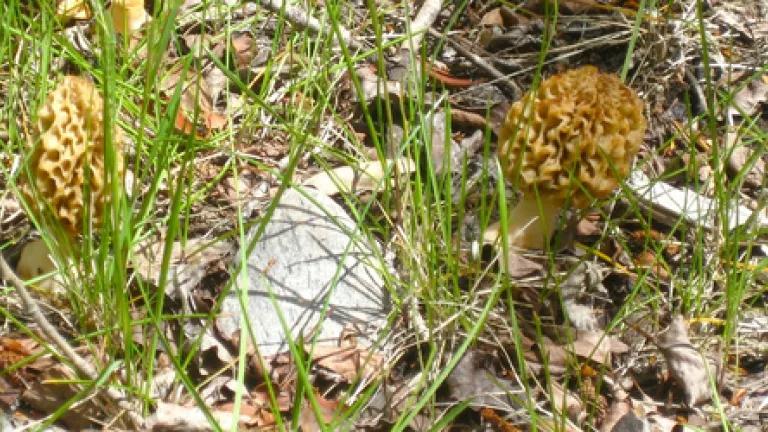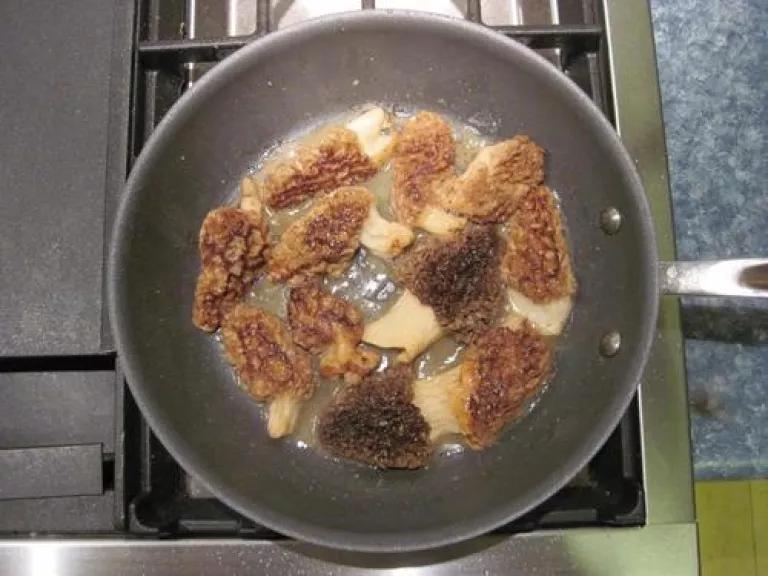
Each spring, they grow. From a recently frozen earth, they rise. Quietly, secretly, calmly, they slink up out of dark soil and emerge.
They are simple, pure, undemanding. Small, just a few inches, muted colors, no flash, humble. They are oblivious to the wild, animated explosion unfolding all around them, which Verlyn Klinkenborg aptly described as the “abruptness of spring, its riotous biological opportunism.”
Strong and sturdy, they are the kings of the understory. While red-winged blackbirds cackle from the cattails, Canada geese honk from a river island, and newborn whitetail fawns curl up and hide in tall grass, they unassumingly beat back gravity and bid hello to spring.
Morel mushrooms. Morels.
Their arrival, shrouded in mystery, consumes the attention of those that worship their flesh. An elk steak is divine, the breast of a ruffed grouse almost sinful, but fresh morels, in the spring, after a long winter, oh, dear god.
You cut them from their stem, place them in a mesh bag (never plastic), and you bring them to your home. You brush away the dirt and bugs with a toothbrush. You do not rinse them.
You gently fry them in a pan with a copious amount of butter over medium heat. And a dash of salt and pepper. And nothing else.

You don’t desecrate their existence in a soup. You don’t garnish a rubbery chicken with them. You don’t serve them as a side course.
And you wash them down with cold beer. Nothing from Napa or Sonoma. Please, don’t insult them with any of that merlot, pinot, chardonnay crap.
If the morel gods have smiled kindly upon you, and you scored the mother lode, you dry the rest. You cut each morel in half, lengthwise, and then you put a window screen between two coolers, lay the morels on top of the screen, and let them dry for a few days.
When they’re dry, you put them in zip-loc bags, and store them in a dark corner of your pantry. And then, when the urge beckons, you take a couple of handfuls and soak them in water for an hour or two. Once they’re rehydrated, you remove them from the water and pat them dry with paper towels.
And then you pan-fry them. If done properly, they will taste like you picked them fresh that morning. (With dried morels, per the 1994 United Nations Decree on Morel Consumption, you’re also allowed to make morel risotto, using the morel water as your stock, but this is only permissible if you previously pan-fried more than three batches of rehydrated morels. And, again, no wine.)
This time of year, morel-hunters become obsessive and conspiratorial. And slightly paranoid.
These days, whenever I enter my favorite eatery for lunch and the owner sees me, he sprints from the kitchen to meet me. He greets me with a rousing hello, but then his voice quiets.
“Have you found any?”
“No, not yet.”
“Me neither. I was out Sunday night. Nothing. I’m going back out after work tonight.”
“I looked for them on Wednesday and Sunday. Didn’t find any, but we’re close. Any day now.”
“Yeah, any day. Stay in touch.”
I’m still learning this game, but the education is half the fun. To find morels, you have to get out, get your boots wet, get your hands dirty, and soak up the sweetness of spring. Without question, the best naturalists are always the best hunters, whether the quarry is mushroom or mule deer, and the more time you spend outside, the more you learn.
Many of us fill our freezers with wild game in the fall, but foraging in the spring is another opportunity to procure our own food without a trip to the grocery store and a Visa swipe to Big Food. It’s a chance to connect with our foraging forebears, develop a more intimate relationship with the forest floor, and make our taste buds really, really happy.
Winter is over. Spring is here. Time to get your fungus on.

(This article originally appeared in The Bozeman Magpie.)